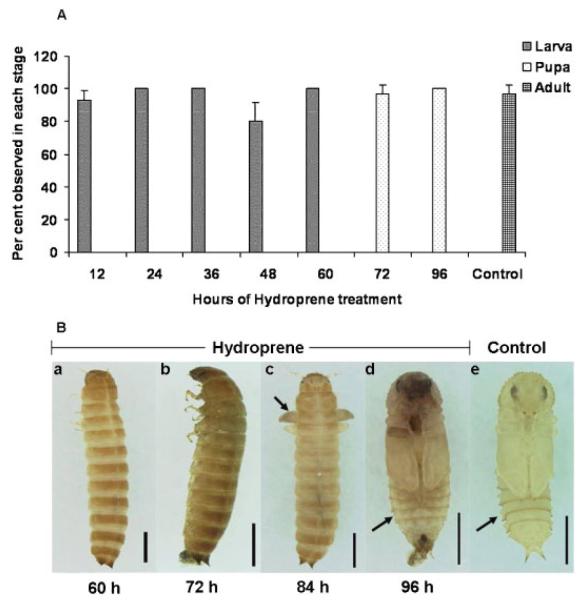Figure 4.
A: Developmental responses of final instar larvae fed orally with 0.5 ppm of hydroprene at different time points after last ecdysis. The number of larvae, pupae, and adults was recorded after 15 days of treatment. The control group represents the average of each control at different time points that were exposed to acetone alone. The X-axis indicates the hours of final instar larvae when hydroprene treatment was given. The Y-axis represents the percentage of insects in each stage. Ten insects were used for each time point and replicated three times. Mean±S.D. of three independent experiments are shown. B: Effect of topical application of hydroprene on the metamorphosis. Hydroprene (1 mg) in acetone was applied topically at different time points of final instar larvae and the effects are shown (a–e). Application at 60-h AEFL resulted in all larvae undergoing supernumerary larval molt (a). When applied at 72-h AEFL, most of the larvae died during the quiescent stage unable to pupate (b). Administration at 84-h AEFL resulted in larvalpupal intermediaries (40%) with the development of wings (c, black arrow) and the remaining 60% remained as larvae. Application at 96-h AEFL did not block larval-pupal metamorphosis but the resultant pupae were malformed and gin-traps were not well developed (d, black arrow). All control larvae became pupae (e). Scale bar = 1 mm.

